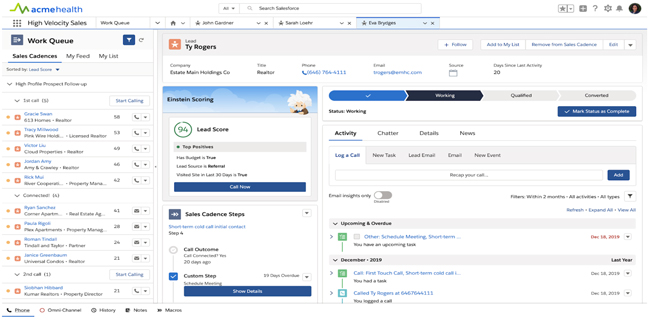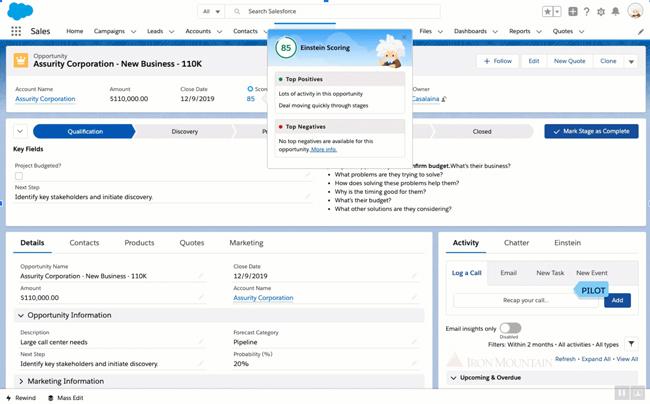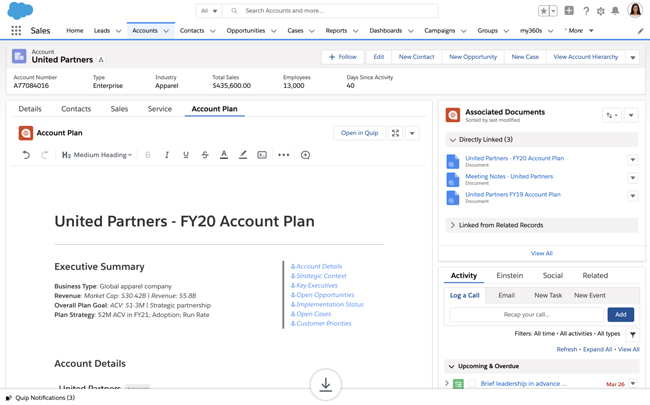COVID-19 has transformed the way companies sell. Sales pitches that were once delivered in person, and deals that were once closed over a handshake are now being done virtually.
In India, 96% of B2B businesses surveyed by McKinsey have shifted to a remote selling model. 70% believe that the new model is just as effective, or even more so than before.
Still, the sudden shift to remote selling isn’t always easy. How do you ensure that your teams continue being productive at home? How do you track their progress? How do you monitor the status of various customer accounts when your teams aren’t all in one place?
To provide some insights, Salesforce recently hosted a webinar on How to Help Remote Sales Teams Be Productive. Led by Jacob Hkeik, Product Marketing Manager, APAC, Salesforce, the session featured Alekhya Bodingari, Lead Solution Engineer, Salesforce India, and Romil Agarwal, Sales Director, Commercial Sales, Salesforce India.
Here are a few key takeaways from the discussion:
Simplify selling with one platform
The first step in improving team productivity is to make it easier for your employees to do their jobs. If they have to keep switching between multiple different applications to check their emails, schedule meetings, view customer data, or track emerging opportunities, they’re going to find it difficult to stay on top of things. But if they can get more done with one application, they’re likely to save time, while also selling smarter.
With Salesforce Inbox, for instance, your team can do more than just check emails. They can add deals right from their inbox to the CRM solution. They can instantly update sales data. And they can also log customer interactions automatically.
This means that without leaving Salesforce Inbox, your teams can have full visibility into customer profiles and opportunities. Meetings can be set up quickly, and emails scheduled to reach customers at optimal times.
All of this information feeds into Salesforce Einstein at the backend, simplifying customer conversation tracking, and helping your teams swiftly identify new sales opportunities.

Make data accessible through a single source of truth
In a distributed working model, information that was already scattered across spreadsheets, marketing systems, or even reps’ heads can end up becoming even less accessible than before. And when data is fragmented, teams don’t get a complete view of customers. Important details go unnoticed, and potential selling opportunities are missed.
Sales teams are a lot more powerful and quick to act when they have a unified, real-time view of data. With the Salesforce Lightning Experience, all the information your teams need to be productive can be found on their home page. At a glance, they can track their individual performance, team and regional performance, pipeline reports, account related news, tasks, or events.
All team members working on a deal have visibility into the estimated value of the deal, discounts, activity breakdowns, and other key details. This allows them to make informed decisions, together.
Meanwhile, sales pipelines are regularly updated on Sales Cloud. Therefore, team managers can monitor productivity directly on the Salesforce app.
All of this means that even when working remotely, your sales teams can continue performing just as well as they would in an office.

Prioritise and focus using analytics-driven insights
To optimise growth, leaders need up-to-date information on sales performance trends across product categories, channels, points of sales, and locations. With these insights, they can better prioritise team activities and resources.
Sales Cloud Einstein helps you do this and more. The AI engine analyses millions of data points to uncover historical pipeline information and business trends. It also takes the guesswork out of forecasting by leveraging sales history to predict which leads and opportunities are most likely to convert.
At any time, your sales managers can track pipeline velocity, sales close rates, and other key metrics. They can also analyse customer interaction levels, understand how customers think, and anticipate their behaviour – all of which helps your organisation engage in more relevant conversations and sell smarter.

Stay connected on solutions that encourage real-time collaboration
Seamless collaboration is essential to a sales team’s operating speed and efficiency. The better team members can communicate and share data with each other, the faster they can make decisions and drive sales.
Two tools that can help you strengthen team collaboration are Chatter and Quip. Chatter makes it easy for your remote teams to work together on sales opportunities and campaigns, while also sharing insights, proposing new ideas, and finding the latest presentations and resources.
Quip can help your teams collaborate in real time on various documents and spreadsheets, all in one place.
But internal collaboration isn’t the only thing that matters. Your sales teams are also engaging with customers on a regular basis to deliver pitches, nurture leads, and close deals.
With Quip, you can share presentations, bills of materials, and calculations with customers. This way, everyone stays current on everything happening on the customer front, including the customer.

In a nutshell
Moving to a remote sales model doesn’t have to be difficult. Digitisation has opened up multiple new opportunities for teams to continue engaging customers, and collaborating with each other, even while working from different locations. COVID-19 was simply the catalyst for digital transformation, demonstrating how remote selling can still be productive as well as efficient. It will be interesting to see how this trend pans out in a post-COVID world.
Want to learn more?
For more tips on how you can make your remote sales team more productive and even see a demo of how tech can help you here, watch the webinar How to Help Remote Sales Teams Be Productive



